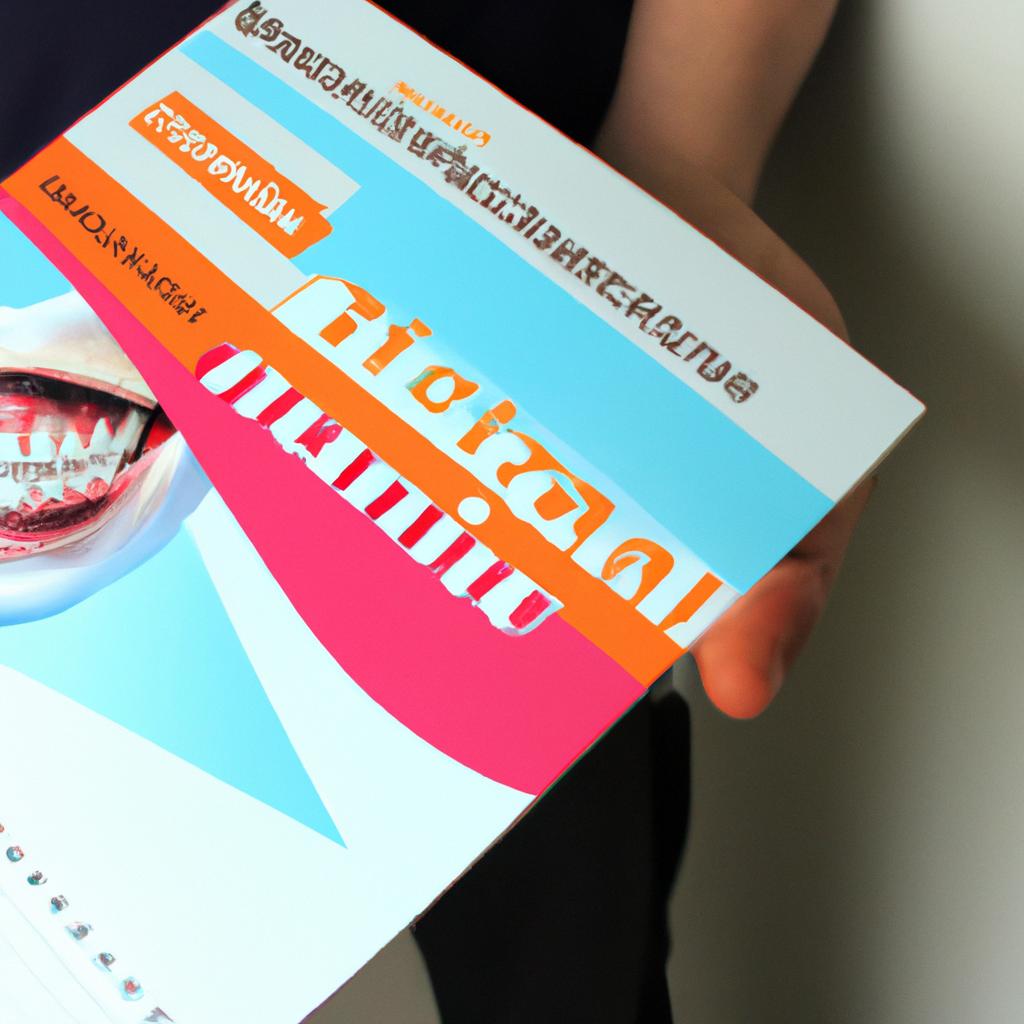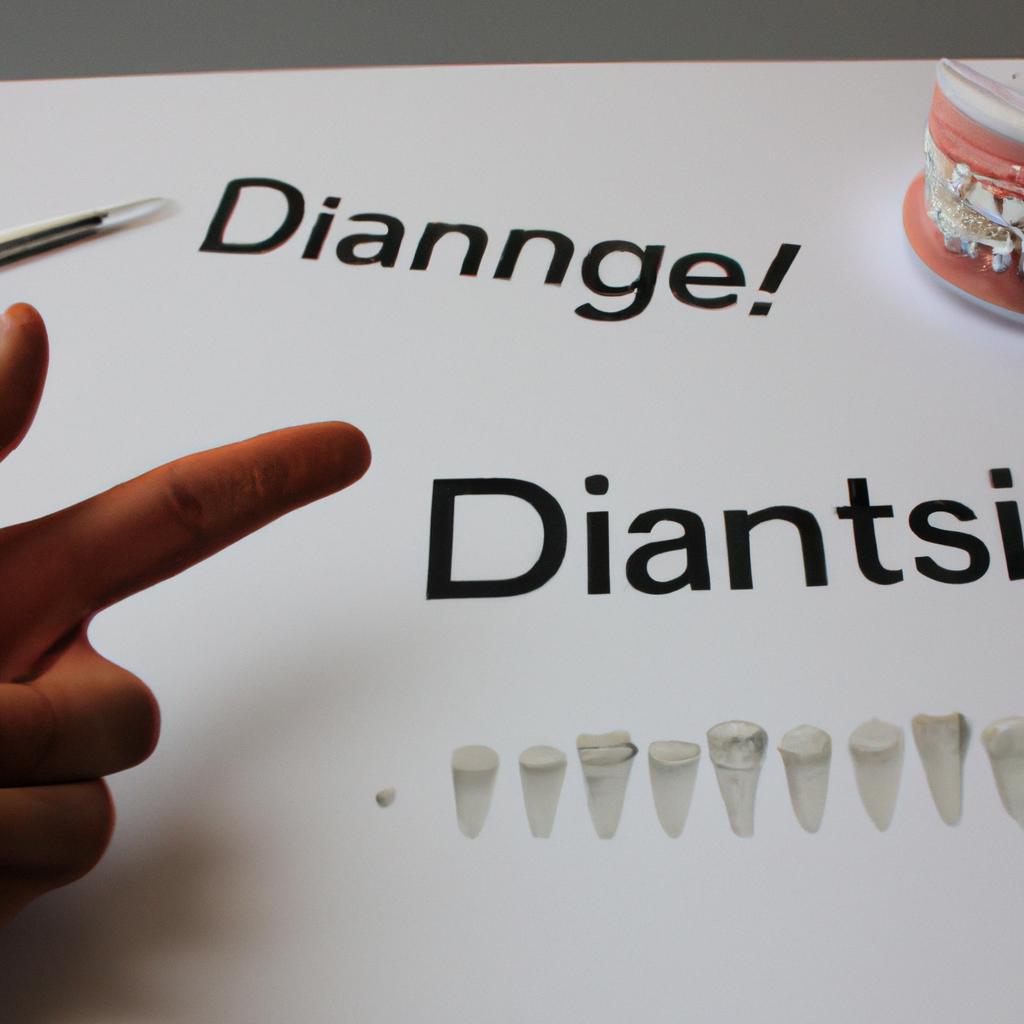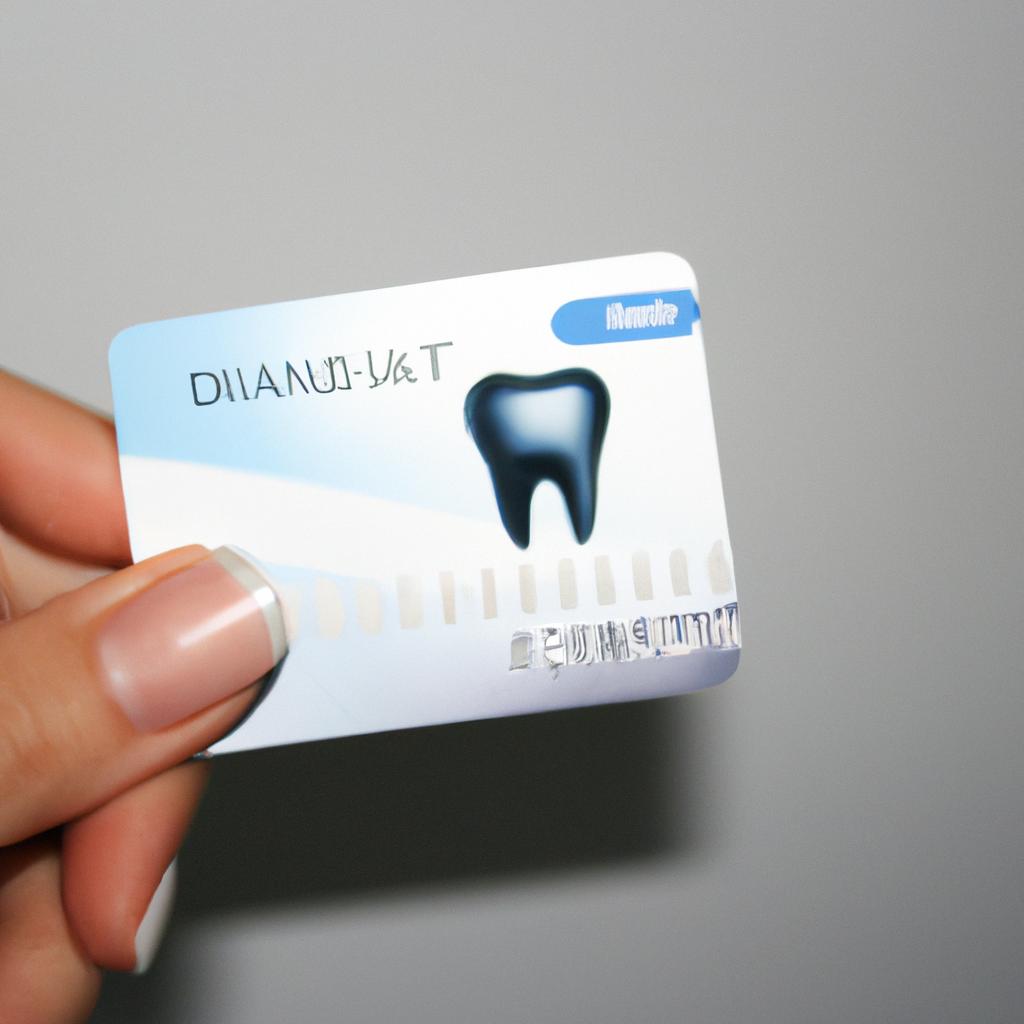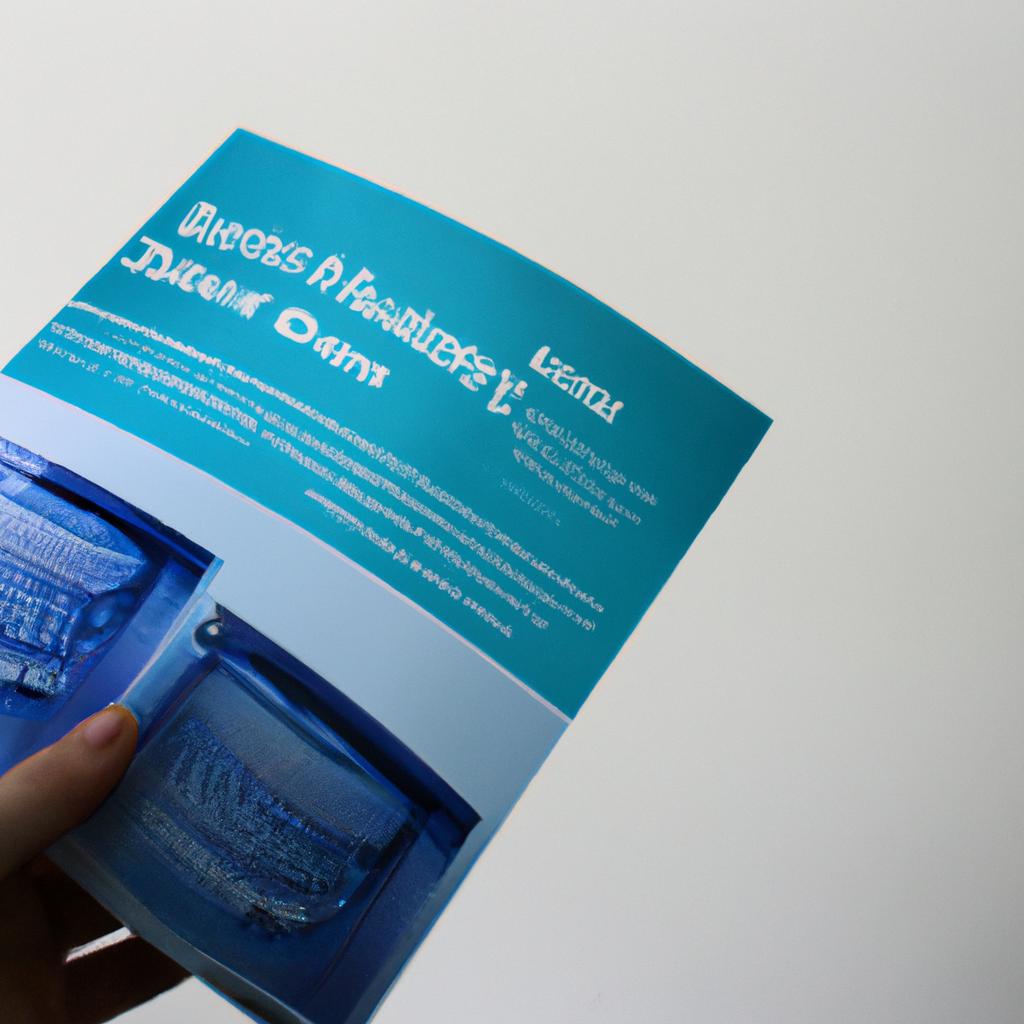Discount Dental Plans: A Comprehensive Guide to Dental Financing for Specialized Treatments

The cost of specialized dental treatments can be a significant burden for individuals seeking optimal oral health care. From orthodontic procedures to cosmetic dentistry, these treatments often come with hefty price tags that may deter patients from pursuing the care they need. However, discount dental plans offer an alternative solution to help alleviate financial concerns and make these treatments more accessible. For instance, imagine Sarah, a young professional who has always been self-conscious about her misaligned teeth. Despite understanding the potential benefits of orthodontic treatment in improving both her confidence and overall dental health, she hesitates due to the high costs associated with traditional braces or clear aligners. In this comprehensive guide, we will explore how discount dental plans can serve as an effective financing option for specialized dental treatments like orthodontics and beyond.
Discount dental plans provide individuals with affordable access to a wide range of dental services including specialized treatments such as crowns, implants, veneers, and periodontal surgeries. These plans operate on a membership basis where participants pay an annual or monthly fee in exchange for discounted rates at participating dentists’ offices. By leveraging their partnerships with various providers, discount dental plan companies negotiate reduced fees for members without compromising the quality of care received. This arrangement allows patients like Sarah to This arrangement allows patients like Sarah to receive the specialized dental treatments they need at a more affordable price. With a discount dental plan, Sarah can choose from a network of participating dentists who offer discounted rates for orthodontic procedures such as braces or clear aligners.
When Sarah joins a discount dental plan, she will typically pay an annual or monthly fee, which grants her access to discounted rates for various dental services. This fee is often much lower than the cost of traditional dental insurance premiums, making it a more cost-effective option for individuals seeking specialized treatments.
Once Sarah has enrolled in a discount dental plan, she can search for participating dentists in her area who specialize in orthodontics. These dentists have agreed to provide their services at reduced rates for plan members, ensuring that Sarah receives the same quality of care without breaking the bank.
It’s important to note that while discount dental plans can make specialized dental treatments more affordable, they do not function as traditional insurance plans. Discount plans do not involve deductibles, copayments, or maximum coverage limits. Instead, members simply pay the discounted rate directly to the dentist at the time of service.
In addition to orthodontics, discount dental plans can also help cover other specialized treatments like cosmetic dentistry procedures. Whether Sarah is interested in teeth whitening or porcelain veneers, she can take advantage of discounted rates through her membership in a discount dental plan.
Overall, discount dental plans offer an alternative financing option for individuals seeking specialized dental treatments. By providing access to discounted rates at participating dentists’ offices, these plans make it easier and more affordable for patients like Sarah to pursue optimal oral health care and achieve their desired smile transformation.
Understanding Discount Dental Plans
Understanding Discount Dental Plans
Imagine a scenario where you require specialized dental treatment, such as orthodontic braces or dental implants. These treatments often come with hefty price tags that can strain your budget. This is where discount dental plans come into play, offering an alternative financing option for individuals seeking affordable access to quality dental care.
Discount dental plans are membership-based programs designed to provide discounted rates on various dental services and procedures. Unlike traditional insurance plans, these plans do not involve monthly premiums or deductibles but rather offer reduced fees directly from participating dentists. By paying an annual or monthly fee, members gain access to a network of dentists who have agreed to provide their services at discounted prices.
To better understand the benefits of discount dental plans, consider the following aspects:
- Cost savings: One key advantage of these plans is the potential for significant cost savings compared to paying full retail prices for treatments. With discounts ranging from 10% to 60%, depending on the service and provider, individuals can save substantial amounts of money on their dental expenses.
- Flexibility: Discount dental plans typically allow members to choose any dentist within the plan’s network. This flexibility ensures that individuals can receive treatment from a preferred dentist without being tied down by restrictive provider networks.
- No waiting periods: Unlike some traditional insurance policies that impose waiting periods before certain treatments are covered, discount dental plans generally have no waiting periods. Members can start using their benefits immediately after enrolling in the plan.
- Comprehensive coverage: While each discount dental plan varies in terms of covered services, many offer extensive coverage beyond routine check-ups and cleanings. From fillings and root canals to cosmetic procedures like teeth whitening, these plans may include a wide range of treatments.
By utilizing a markdown bullet point list format in discussing the advantages of discount dental plans, readers can easily grasp the main points while fostering engagement with the topic. Additionally, a markdown table format can be employed to illustrate the various discount percentages offered for different services within a discount dental plan’s network. This visual representation further enhances reader comprehension and emotional appeal.
In transitioning to the subsequent section about “Choosing the Right Discount Dental Plan,” it is important to maintain a seamless flow in the writing. Therefore, we will avoid using words like “finally” or “in conclusion.” Instead, we can smoothly transition by stating that understanding the benefits of discount dental plans sets the foundation for making an informed decision when selecting an appropriate plan.
Choosing the Right Discount Dental Plan
Section Title: Exploring Discount Dental Plan Providers
Imagine this scenario: Sarah, a working professional in her mid-30s, recently underwent a dental procedure that left her with significant out-of-pocket expenses. Faced with limited financial resources and the need for further specialized dental treatments, Sarah finds herself seeking alternative financing options. In this section, we will explore different discount dental plan providers that offer affordable solutions to individuals like Sarah who require specialized dental care.
Exploring Different Providers:
When it comes to choosing the right discount dental plan provider, several factors should be considered. Here are some key considerations to keep in mind:
-
Network of Dentists: One crucial aspect is the size and accessibility of the network of dentists affiliated with each provider. A larger network may provide more choices when it comes to finding a specialist or specific treatment option.
-
Coverage Options: It’s essential to carefully review what services are covered under each discount dental plan offered by various providers. Some plans may have limitations on coverage for certain procedures or only cover preventive treatments such as cleanings and check-ups.
-
Cost Structure: Understanding the cost structure associated with each provider is vital in determining affordability. Compare annual membership fees, copayments (if any), and any additional charges for specialized treatments that might not be included in the standard discounted rates.
-
Customer Support: Consider the level of customer support provided by different discount dental plan providers. Look for companies that offer responsive helplines or online chat features which can assist you promptly when questions arise about your plan or claims process.
Below is an example table comparing three leading discount dental plan providers based on these considerations:
| Provider Name | Network Size | Coverage Options | Cost Structure | Customer Support |
|---|---|---|---|---|
| SmileSaver | Extensive | Comprehensive | Annual fee + Copayment | 24/7 helpline |
| DentalCare Plus | Moderate | Preventive and basic services | Monthly fee + Co-insurance | Online chat support |
| HealthyTeeth | Limited but growing | Major procedures covered | Tiered pricing based on treatment type | Email customer support |
Coverage and Benefits of Discount Dental Plans:
As we delve further into the topic, our next section will explore in detail the coverage and benefits offered by discount dental plans. Understanding these aspects is crucial for individuals like Sarah who require specialized treatments and want to ensure that their chosen plan adequately covers their needs.
With a clear understanding of different discount dental plan providers, let’s now turn our attention to exploring the coverage options and benefits provided by such plans.
Coverage and Benefits of Discount Dental Plans
When it comes to discount dental plans, understanding the coverage and benefits they offer is crucial. Let’s explore some key information that will help you make an informed decision about whether a discount dental plan is right for you.
Imagine this scenario: Sarah, a young professional in her late twenties, has been experiencing severe tooth pain due to an infected molar. Without insurance or substantial savings, she worries about the cost of necessary treatment. However, with a discount dental plan, Sarah can access affordable dental care and receive the treatment she needs without breaking the bank.
To further understand how discount dental plans work, let’s take a closer look at their coverage and benefits:
- Wide range of services: Discount dental plans typically cover various preventive, basic, and major treatments such as cleanings, fillings, root canals, extractions, crowns, bridges, dentures, orthodontics (including braces), and even cosmetic procedures like teeth whitening.
- Cost savings: By enrolling in a discount dental plan, individuals can enjoy significant discounts on both routine check-ups and more complex procedures. These reductions in fees allow patients to save money while still receiving quality care from accredited dentists within the network.
- No waiting periods: Unlike traditional insurance plans that often have waiting periods before certain services are covered fully or partially, most discount dental plans provide immediate coverage upon enrollment. This means that individuals can start using their benefits right away without any delays.
- Flexibility and accessibility: Discount dental plans usually do not restrict participants based on pre-existing conditions or age limitations. Additionally, these plans often have large networks of participating dentists across different locations—providing individuals with flexibility when choosing healthcare providers.
Now that we’ve explored the coverage and benefits offered by discount dental plans let’s move on to our next section where we’ll discuss finding affordable dental treatment options. Remember, taking the time to research and understand the available options will empower you to make informed decisions about your dental health.
Finding Affordable Dental Treatment Options
Having explored the coverage and benefits of discount dental plans, let us now delve into finding affordable dental treatment options. To illustrate this further, consider the case of Sarah, a 32-year-old woman who recently discovered she requires extensive orthodontic work to correct her misaligned teeth. However, being self-employed with limited financial resources, Sarah is in search of cost-effective alternatives for specialized dental treatments.
Paragraph 1:
When seeking affordable dental treatment options, it is crucial to consider various factors that can help minimize expenses while ensuring quality care. Firstly, exploring community health clinics or dental schools can be an excellent starting point. These institutions often offer discounted or even free services provided by supervised students or qualified dentists looking to gain experience. By choosing such facilities, individuals like Sarah have access to professional expertise at reduced costs.
Additionally, researching government assistance programs tailored towards oral healthcare could prove beneficial. For instance, Medicaid provides coverage for low-income individuals and families, including essential dental procedures. Exploring eligibility requirements and application processes for these programs can potentially open doors to more affordable treatment options.
- Seek recommendations from trusted friends, family members or colleagues who may have utilized affordable dental treatment options.
- Consider joining local support groups or online communities focused on oral health; they often share valuable experiences and resources related to accessing cost-effective dental care.
- Take advantage of seasonal promotions offered by private practices or clinics during holidays or specific times of the year.
- Inquire about flexible payment plans directly from dentists’ offices or inquire if they accept sliding scale fees based on income level.
Paragraph 2:
Furthermore, some non-profit organizations aim to bridge the gap between affordability and specialized oral healthcare treatments. For example, Smile Train partners with volunteer dentists worldwide to provide cleft palate repair surgeries at no cost to patients in need. Initiatives like this not only cater specifically to certain conditions but also alleviate the financial burden associated with specialized dental procedures.
To assist in visualizing the potential cost-saving options available, consider the following table:
| Affordable Dental Treatment Options | Cost Range | Availability |
|---|---|---|
| Community Health Clinics | Free or low-cost | Widely accessible |
| Government Assistance Programs | Varies | Dependent on eligibility criteria |
| Non-profit Organizations | No cost | Limited to specific conditions |
Paragraph 3:
By utilizing these strategies and resources, individuals like Sarah can actively navigate their way towards affordable dental treatment options. The next section will delve into the process of applying for discount dental plans, which further enhances accessibility to specialized treatments while ensuring budget constraints are taken into account. By understanding how to successfully navigate this application process, individuals can gain comprehensive coverage at reduced costs without compromising on quality care.
With a clear understanding of finding affordable dental treatment options, let us now explore navigating the application process for discount dental plans.
Navigating the Application Process for Discount Dental Plans
Case Study:
To understand how individuals can navigate the application process for discount dental plans, let’s consider a hypothetical scenario. Sarah, a working professional in her mid-30s, recently discovered that she needs specialized dental treatment to address an underlying oral health issue. However, due to financial constraints, she is unable to afford the high costs associated with such treatments. In search of affordable options, Sarah decides to explore discount dental plans.
Understanding the Application Process:
When applying for a discount dental plan, there are several steps involved. By following these steps diligently, individuals like Sarah can maximize their chances of securing an appropriate plan:
-
Research and Compare: Start by researching different discount dental plans available in your area. Look for reputable providers who offer comprehensive coverage at reasonable prices. Make comparisons based on factors such as cost, covered services, network dentists, and customer reviews.
-
Evaluate Eligibility Criteria: Each discount dental plan may have specific eligibility requirements. These criteria could include age restrictions or pre-existing conditions that might affect coverage availability. Assess whether you meet these qualifications before proceeding further.
-
Gather Necessary Documentation: To complete the application process smoothly, gather all necessary documentation beforehand. This may include proof of identification (such as a driver’s license or passport) and any additional documents requested by the provider.
-
Submitting the Application: Once you have completed all required forms and gathered supporting documents, submit your application according to the instructions provided by the discount dental plan provider.
Consider these emotional benefits when navigating through the application process for discount dental plans:
- Peace of mind knowing that specialized dental treatments become more accessible.
- Relief from financial stress due to reduced out-of-pocket expenses.
- Confidence in receiving quality care from trusted network dentists.
- Empowerment in taking control of one’s oral health without compromising other essential expenditures.
Emotional Table:
| Emotional Benefits | Examples |
|---|---|
| Peace of mind | Knowing you can afford necessary dental treatments |
| Relief from stress | Reducing financial burden and worry about high treatment costs |
| Confidence in care | Accessing trusted network dentists who specialize in your needs |
| Empowerment | Taking control of oral health without sacrificing other expenses |
By successfully navigating through the application process, individuals like Sarah can overcome financial barriers and gain access to discounted dental services. However, it’s important to be aware of additional strategies for maximizing savings with discount dental plans. In the following section, we will explore some practical tips that can help individuals make the most out of these cost-saving options.
Tips for Maximizing Savings with Discount Dental Plans
Transitioning from the application process, let’s now explore some valuable tips for maximizing your savings with discount dental plans. To illustrate the benefits of these strategies, let’s consider a hypothetical case study.
Imagine Sarah, a working professional who requires specialized dental treatments such as orthodontics and periodontal therapy. By carefully following these tips, she was able to save significantly on her dental expenses:
-
Utilize In-Network Providers: One effective way to maximize your savings is by choosing dentists within the network associated with your discount dental plan. These providers have agreed to offer discounted rates to plan members, ensuring you receive substantial cost reductions compared to out-of-network options.
-
Prioritize Preventive Care: Investing in regular preventive care can help you avoid more extensive and expensive procedures down the line. With a discount dental plan, routine services like cleanings, exams, and X-rays are often covered at little or no additional cost. Take advantage of these opportunities to maintain optimal oral health while minimizing future expenses.
-
Understand Plan Limitations: Familiarize yourself with the specific limitations of your chosen discount dental plan. Some plans may have waiting periods before certain treatments are eligible for coverage or impose annual maximums on reimbursements. Understanding these details will allow you to make informed decisions about when and how to utilize your benefits effectively.
-
Compare Pricing Options: Don’t hesitate to shop around and compare prices among different dentists in your area – even those within your plan’s network. While all in-network providers offer discounts, their pricing structures may still vary slightly. Researching multiple options ensures that you find the most affordable yet high-quality treatment available.
Consider this table presenting a comparison of estimated costs between an individual without any dental insurance versus one utilizing a discount dental plan for common treatments:
| Treatment | Without Insurance ($) | With Discount Dental Plan ($) |
|---|---|---|
| Orthodontics | 5,000 | 3,500 |
| Periodontal Therapy | 2,000 | 1,200 |
| Root Canal | 1,500 | 900 |
| Dental Implant | 4,000 | 2,800 |
By following these tips and taking advantage of the savings offered by discount dental plans, individuals like Sarah can significantly reduce their out-of-pocket expenses while still receiving the necessary specialized treatments they require.
Incorporating these strategies into your approach to dental financing will ensure that you make the most of your chosen discount dental plan. By doing so, you are well on your way to achieving significant cost savings without compromising on quality oral care.






